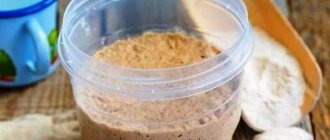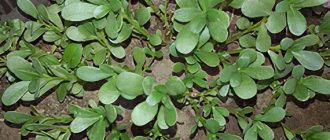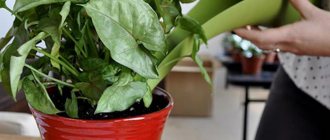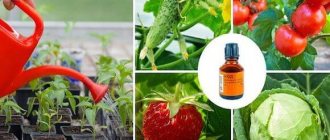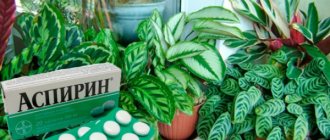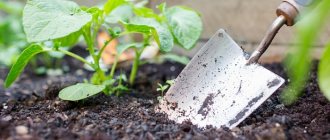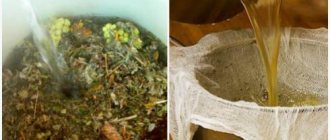Have you fed your plants with yeast, and suddenly your vegetables and flowers have changed and become prettier right before your eyes? We have to disappoint you: this won’t last long. Soon they will look worse than they did before feeding. Why? It's all about the yeast.
Yeast is an indispensable product for cooks. And there is no bread without them, and they are added to wine, and alcohol cannot do without yeast. Pharmacists have also not ignored yeast: these fungi are included in medicines and help with skin diseases and problems with the digestive system, and have a pronounced antioxidant effect. And recently, gardeners have also begun to sing the praises of yeast. This is an excellent fertilizer, a growth stimulator, and protection against garden diseases. We want to add a fly in the ointment to this huge ointment and tell you the whole truth about yeast.
Yeast feeding - as a fertilizer for plants
Yeasts are the simplest single-celled fungi. Their composition itself lacks nitrogen, phosphorus, potassium, that is, those important microelements necessary for normal plant growth. But once in the soil, they begin to affect the organic residues that are in the ground. They begin to process them, thereby decomposing these residues faster and better. When decomposed, they release large quantities of nitrogen and phosphorus into the soil.
Plants accordingly absorb the increased content of these elements and actively develop. Nitrogen helps build up vegetative mass, and phosphorus promotes better development of the root system. Here is the effect of their use. That is why such fertilizer is considered a growth stimulator. And it’s not for nothing that the following expression appeared: “It’s growing by leaps and bounds.”
Conditions for fungal development
To cause fermentation, three factors are needed:
- Warm. Yeast becomes active when the temperature rises above 15 degrees. In order for yeast feeding for plants to be effective, it is necessary to ensure that the soil is preheated in containers that need to be exposed to the sun.
- Sugar. It promotes fermentation.
- Time. If the fertilizer does not have enough time to ferment, the beneficial substances will not have time to transfer into the water.
Please note that you cannot use expired yeast (live or dry). When frozen, over-dried, or exposed to other aggressive bacteria for a long time, the active fungi in the yeast simply die.
You cannot make fertilizer from products that have expired. The effect of use will be zero. When using bread pieces, use clean, mold-free, soft or dried pieces.
How to use yeast to feed plants in the garden
Fertilizer has a lot of useful properties, namely:
- Stimulates vegetative growth of plants;
- Improves the soil, that is, enriches it with beneficial bacteria;
- The root system becomes more powerful;
- The endurance of plants improves and their immunity to adverse weather conditions increases;
- The survival rate of any seedlings improves.
Yeast requires warm temperatures for normal functioning. Therefore, fertilizing is used on warm days when the soil is sufficiently warm. If the air temperature decreases, the ground temperature also decreases accordingly, just like in rainy weather. Beneficial mushrooms will not work in such an environment, so the use of fertilizer in such weather conditions will be completely useless. But on warm, hot days, feeding warm soil will be just the thing.
And one more important point. Keep in mind that potassium and calcium must be added to the soil. Because when yeast is added, these elements are absorbed from the soil. As a result, the plant will lack these elements. And the simplest remedy that will help compensate for the loss of these elements is wood ash, since it contains both potassium and calcium.
The benefits of yeast for indoor plants
Humanity has been using yeast since ancient times. This is a very valuable dietary product with beneficial properties. Yeast also brings great benefits to plants.
Many lovers of indoor flowers prefer natural fertilizers. Yeast is rich in protein, potassium, phosphorus, magnesium, biologically active microelements, vitamins B1, B2, folic and other acids.
Benefits of yeast:
- Having examined the soil after fertilizing with a yeast solution, scientists discovered that microorganisms in the soil became more mobile;
- the root system of the plant increases, as a result of which it receives more nutrition, and its growth is also activated;
- help plant rooting;
- weak stems gain strength, plant immunity is strengthened;
- the duration of flowering increases.
Luxurious Homemade roses for 147 rubles (advertising)
How often to water with yeast nutrition
Yeast feeding is carried out 2 times per season, no more, and only in the early stages of plant growth. It is during this period that such fertilizer is very necessary for development and will be beneficial.
The first application is carried out after the seedlings have been planted in a permanent place, and they have taken root and started to grow. During this period, seedlings for further growth urgently need nitrogen and phosphorus to build a powerful root system. It has been noticed that this helps to grow the root system 2 times more than without it or when using other fertilizers. The plants themselves look stronger because they absorb increased nitrogen content from the soil, microelements, and organic iron. And such plants will be much stronger and healthier.
The second application is carried out after 2 weeks. It would be enough. Further use will no longer be effective, since during the fruiting period phosphorus and potassium are needed more than nitrogen. The main thing here is not to overdo it, otherwise such fertilizing will give lush greenery.
Before applying fertilizer, the plants are first watered with water. The earthen lump should be moist so that the nutrients are better absorbed by the roots.
Delicious “mash” for pets
If time allows, you can prepare an unusual top dressing - a little intoxicating, but so healthy! There is no need to worry, your pets will not start fighting or running away from beautiful containers in a drunken stupor, but even exotic beauties - orchids - will certainly envy the lush bushes and bright flowering of the most ordinary plants.
To prepare the nutrient liquid you need:
- a full spoon of raw yeast;
- 16-18 gr. sugar sand;
- one and a half liters of water.
Mix the ingredients in a clean glass container, wait for fermentation, and send to the radiator or to the warmest, sunny windowsill. The liquid will be ready in a week to a week and a half. Combine with filtered warm water (1 part mash, 3 parts water). Before applying, lightly moisten the soil so that the delicate roots or bulbs are not damaged.
Which plants love yeast feeding?
A variety of plants respond well to this feeding.
- All vegetables, but cucumbers, tomatoes, and peppers react especially rapidly;
- Fruit trees, shrubs, strawberries;
- Houseplants.
But be careful: feed the plants two, maximum three times per season:
- In spring to stimulate vegetation;
- In the summer before the period of active fruiting;
- And during the recovery period, that is, after fruiting (but this is not necessary).
Fertilizers from pressed yeast
There is no need to be fancy with additional ingredients in the recipe; just mix the baking product with clean, settled water. If there are few representatives of the home flora, for one feeding you need:
- 900 ml. water;
- half a pack of yeast (50 g).
Mix warm water with baking product. Stir until the solution becomes homogeneous. It is also not recommended to apply it in pure form; dilute it with five liters of water.
Yeast dressing for tomatoes, cucumbers, strawberries, cabbage - recipe
The recipe for preparing stock and working solutions is the same for all types of plants. And the result after applying fertilizer will also be the same everywhere. In just a few days, your plants will come to life and turn green.
Pressed yeast recipe
We dilute 1 small pack of pressed yeast (100g) in 10 liters of warm water. You can first dilute it in a small amount of water (3-5 l), add 3 tbsp. l. sugar, stir everything thoroughly to form a homogeneous solution. Then we put the resulting solution in a warm place for a day so that the fungi wake up and become more active. After a day, add the volume of the resulting mash to 10 liters with warm water. This will be the mother liquor.
We prepare a working solution from the mother liquor. To do this, dilute 1 liter of mother solution in 5 liters of water. Don't forget that the water should be warm. We water the plants with the resulting solution at the root level at the rate of 1 liter per plant.
How to prepare a solution from dry yeast
If you don’t have pressed yeast, you can prepare a mother liquor of their dry yeast. For this purpose, 1 sachet (10 g) is first diluted in a small amount of warm water (0.5-1 l), 2-3 tbsp is added. l. sugar, mix everything thoroughly. And in the same way, the dough is removed for fermentation overnight in a warm place. Then the resulting starter is added to 10 liters of water.
For work, the mother liquor is diluted at a ratio of 1:5. Before starting work, the soil is spilled with water, sprinkled with ash, and then fertilized at the rate of 1 liter per plant.
Let's sum it up
As you can see, feeding plants with yeast will not cause harm if done correctly. Keep in mind that crops react differently to this growth stimulant, so try not to mix anything up. Potatoes, onions and garlic should not be sprinkled with yeast; this will worsen their taste and reduce their shelf life.
Remember that yeast actively absorbs calcium and potassium, so 2-3 days after adding yeast, sprinkle the beds with ash.
The benefits of yeast fertilizer for plants and recipe
How to prepare yeast fertilizer for seedlings
But you can not only feed adult plants in the garden. If seedlings of tomatoes, peppers, and eggplants do not grow well, feed them with yeast as well. The cooking recipe is as follows.
For 3 liters of warm water, take 1 small packet of dry yeast and 2 tbsp. l. granulated sugar. Mix everything thoroughly in the jar and leave the solution to ferment in a warm place for a day. After a day, dilute 1 liter of the prepared solution in 10 liters of water, or 0.5 liter in 5 liters of water.
When applying fertilizer, we always water the plants first so that the earthen ball is moist. And only after this we water the seedlings at the roots with the resulting solution, trying not to get it on the leaves of the seedlings. Feeding is carried out once, and that will be enough. The next one is carried out after the seedlings have been planted in a permanent place.
The first assistant in the absorption of nutrients is succinic acid
Succinic acid helps plants quickly adapt to new conditions that arise as a result, for example, of transplanting to another place, and also promotes the absorption of nutrients from the soil after feeding it.
If we are talking about seedlings, then it will be effective to soak vegetable seeds in a solution of succinic acid, this will increase their resistance to most possible diseases. Subsequently, water the sprouted sprouts with the same solution and spray the formed leaves. This substance destroys toxins in the soil, preventing them from penetrating into the plant itself. By increasing chlorophyll, which is promoted by succinic acid, the yield of vegetable crops increases significantly.
To achieve the result you want, it is very important to maintain the correct proportions and dosage of the substance during the preparation process. So,
- for spraying plants: 1 tablet of succinic acid is diluted in a glass of warm water until dissolved, and then the resulting liquid is poured into a liter of water at room temperature. Spraying the plant is used to stimulate the development of new leaves and shoots - once every 3-4 weeks;
- for soaking seeds before sowing: the solution is prepared in the same way, the seeds are soaked for about 20 hours, after which they are dried at room temperature and sowing begins;
- to soak the roots before replanting the plant: dissolve 1 tablet in a glass of warm water and pour the resulting solution into water at room temperature, bringing the total volume to a liter. Soaking time 1.5 - 2 hours.
Succinic acid in tablet form should be stored in a dry, shaded place where the air temperature does not exceed +25 degrees. When diluted, the shelf life is 15-20 hours. The substance is safe for humans and animals, but despite this, it is recommended to store it away from food.
Useful tips
Feeding flowers with pressed or dry yeast will be effective only if the room is warm and comfortable for indoor beauties. Cold soil, cooling the temperature sharply reduces the vital activity of soil bacteria, and the nutrient solution will turn into a liquid that is difficult for the roots to absorb.
Do not neglect the shelf life of a baked product; even plants will be able to tell that it has been stitched. The leaves will begin to turn yellow, the roots will abruptly stop growing. The flower will look sick, unkempt, and something irreparable may happen - it will die.
Abuse of nutrient fluids can also lead to a disastrous result for the grower - the death of the plant. Self-prepared yeast mixtures should be added no more than 4-6 times a year. If the plant needs additional elements, you can spray it with decoctions of vegetables and tea leaves several times during this time.
We must not forget that the yeast mixture reduces the amount of potassium in the soil. You can prevent the disappearance of an element necessary for indoor beauties quite simply - periodically adding wood ash to the soil. There is also a double benefit here - most pests try to avoid pots with an unpleasant smell of burnt wood.
Fertilizing is a necessary process for the good development of indoor flowers. Even the most attentive care will not replace the nutrients, thanks to which the green lush mass grows, a large number of buds are formed, and the root system develops. Home remedies prepared independently will help save money, and the effectiveness is in no way inferior to expensive purchased drugs. Another advantage of such mixtures is that they can be safely used indoors with a small child or curious pets; there will be no unpleasant or hazardous consequences for health. The result of such labors of the gardener is unchanged - beautiful, well-groomed, lush plants!
